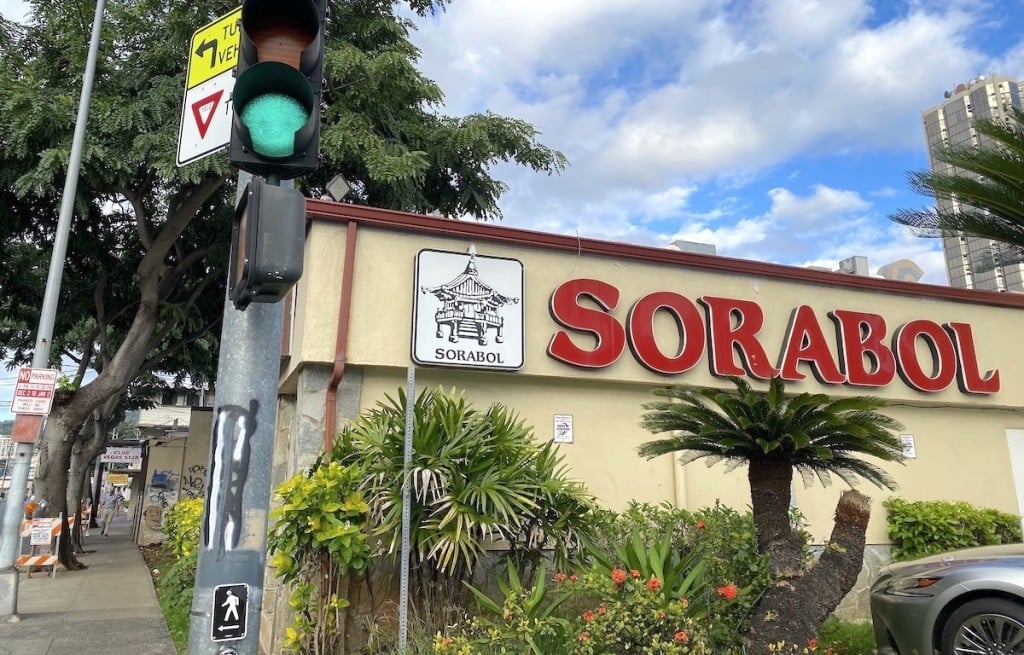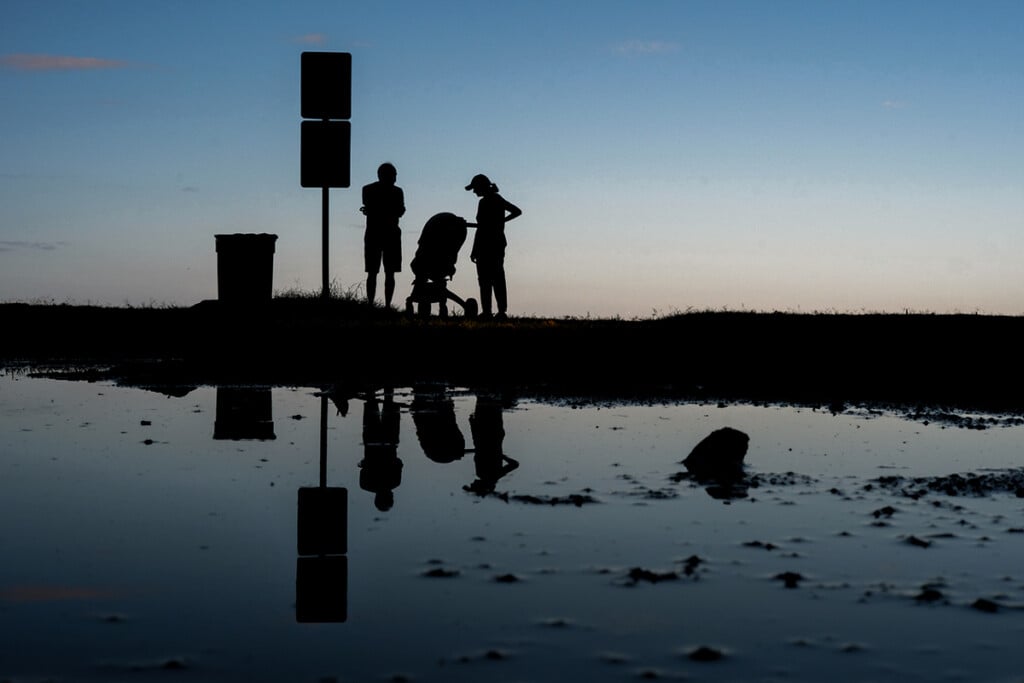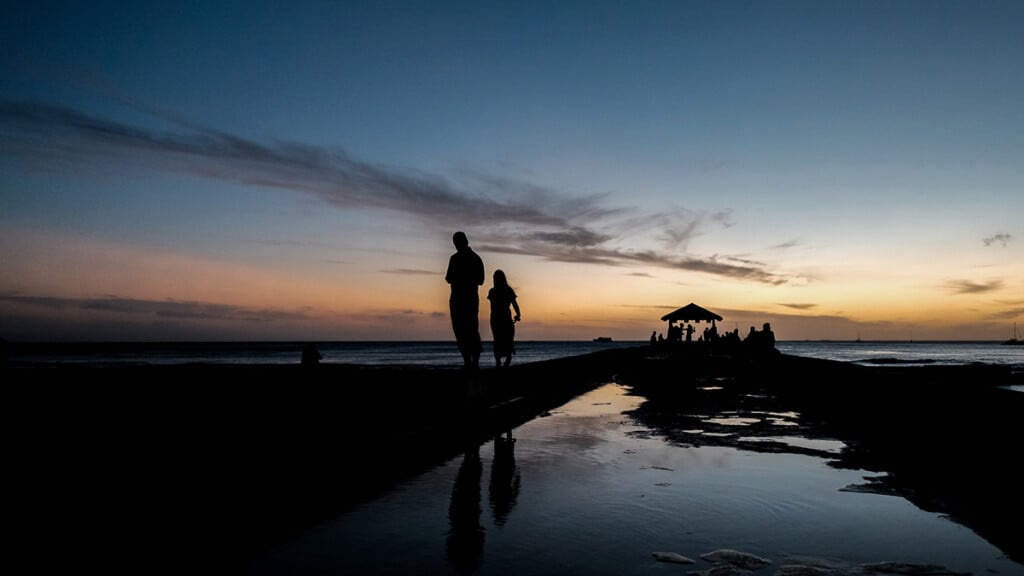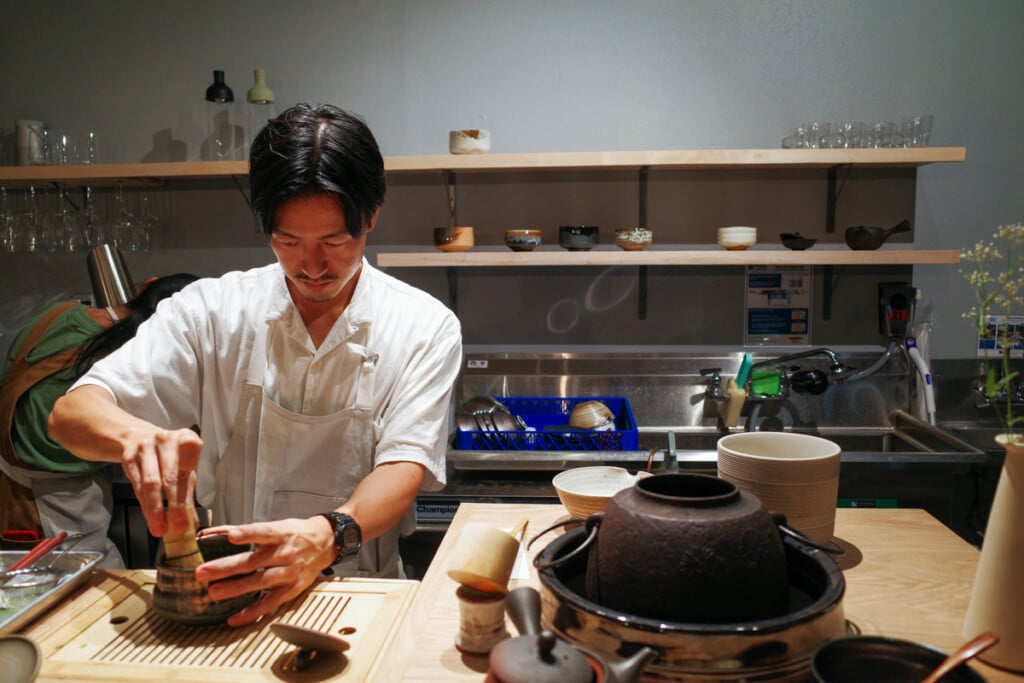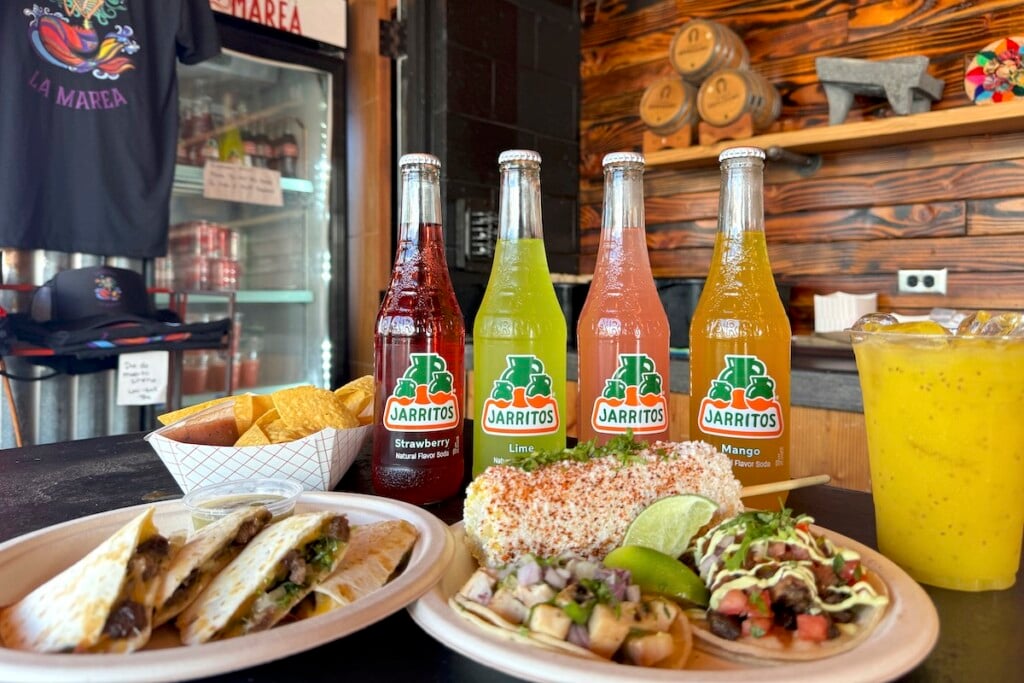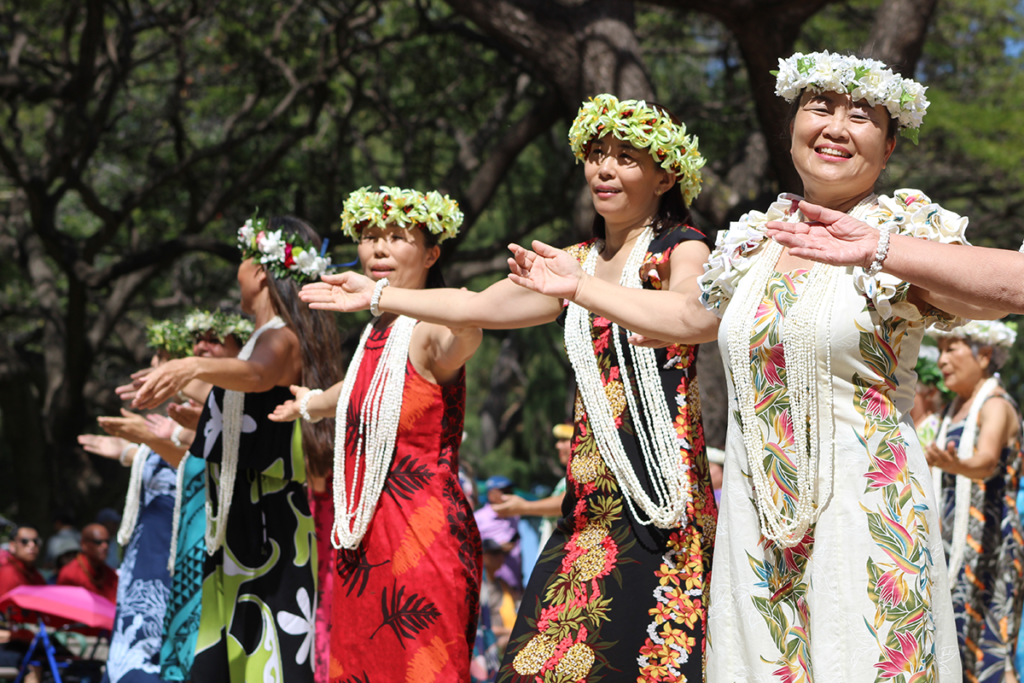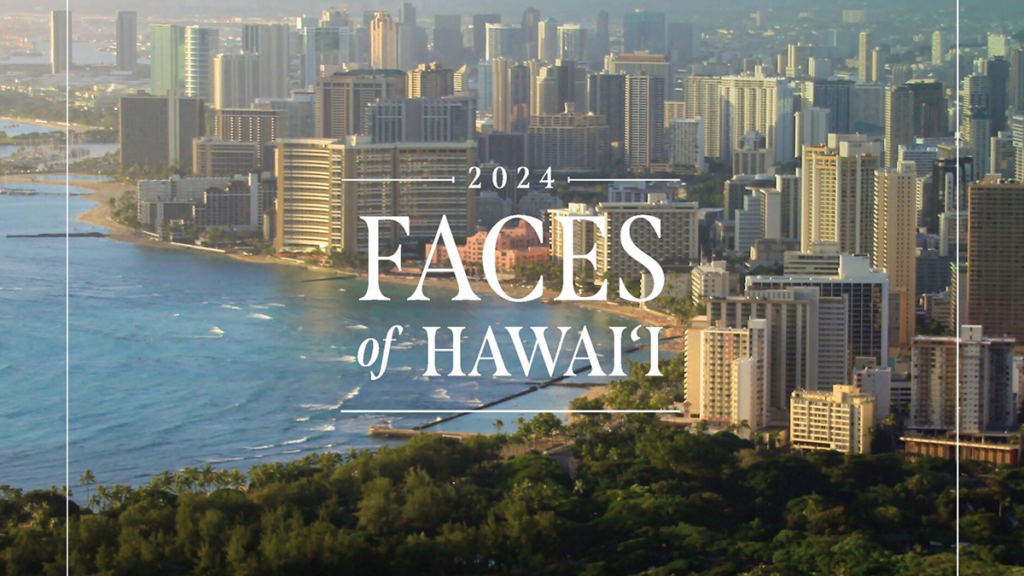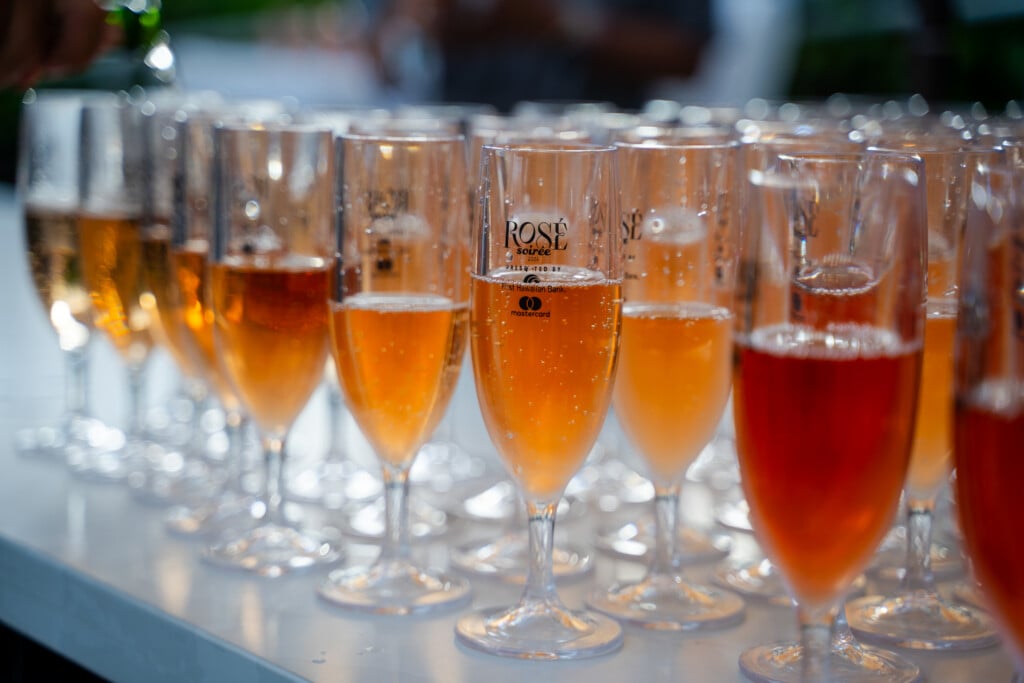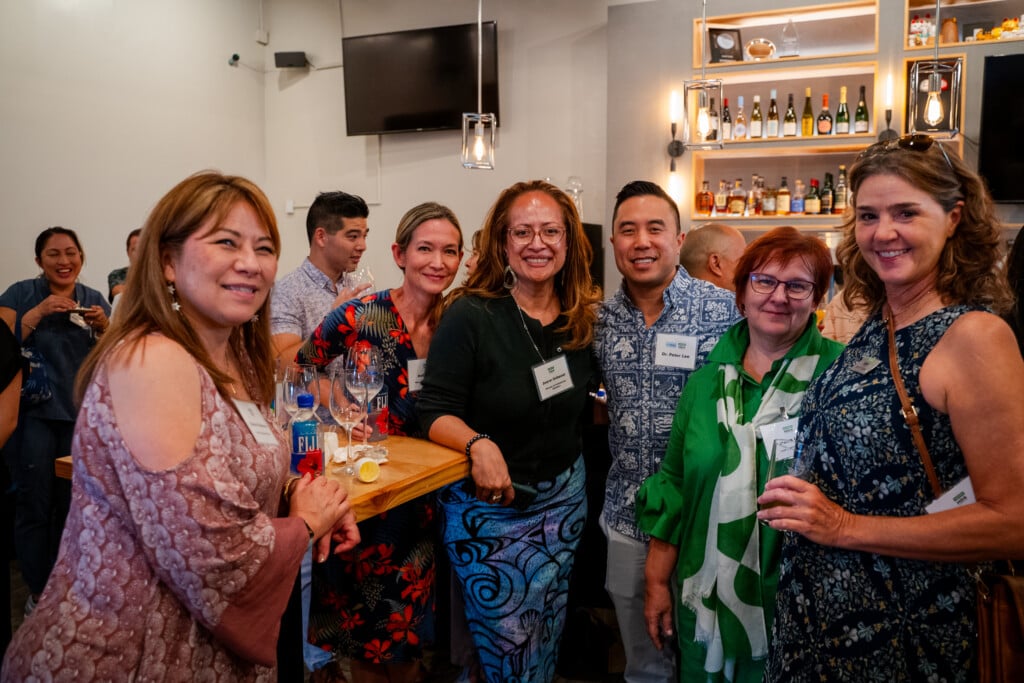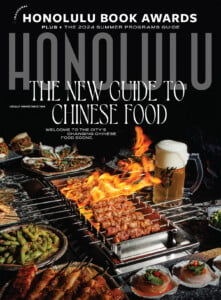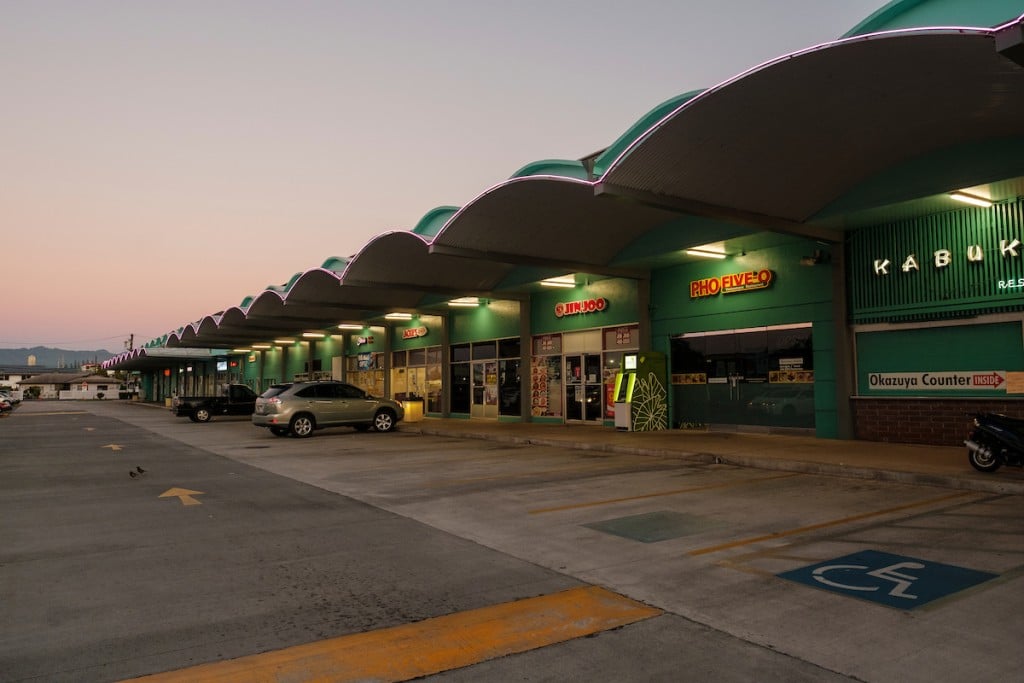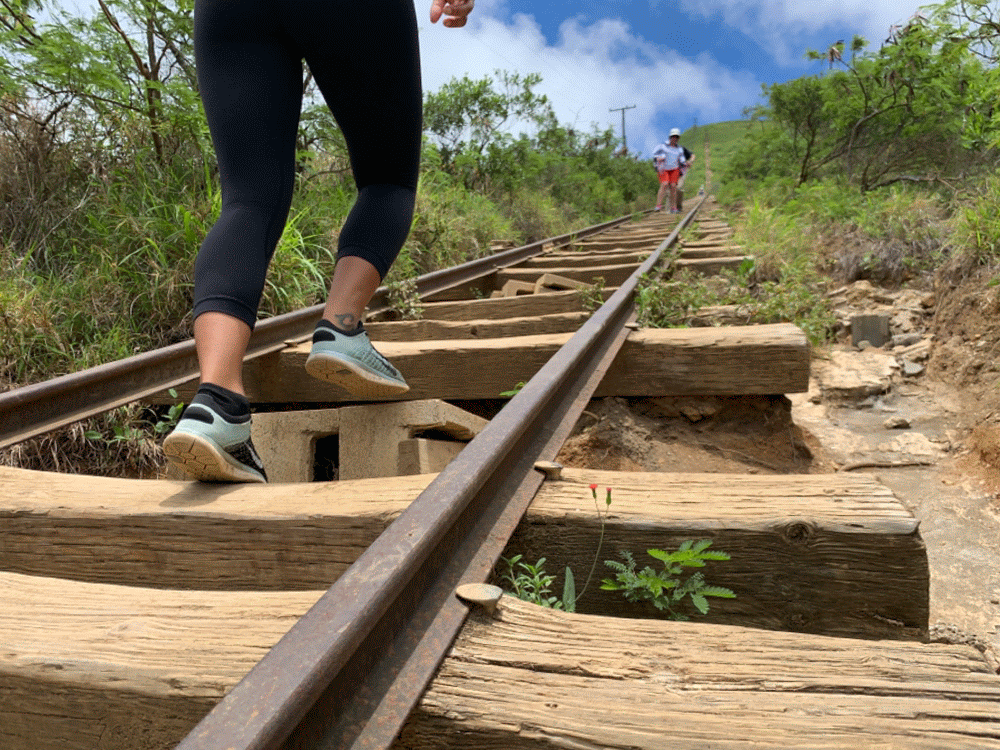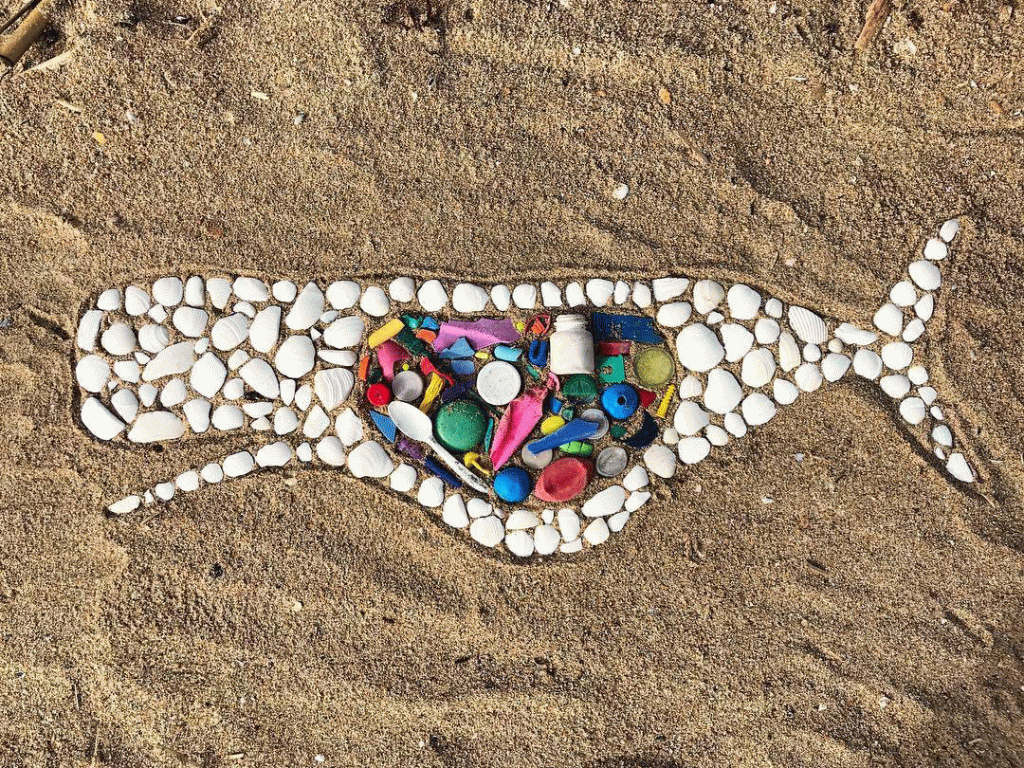Murder, Kidnapping, Drug Trafficking and Money Laundering: Here’s How Hawai‘i’s Crime Scene is Changing
Since the 1970s, organized crime in Hawai‘i has rippled through the community, from gangland-style slayings, gambling and drugs to diverse global operations. But things seemed quieter lately, until a July federal indictment portrayed a Honolulu businessman as a crime boss, who ran an extensive enterprise sustained by a reputation for violence and intimidation. As stories surface of murder, kidnapping, drug trafficking and money laundering, we take a closer look at how organized crime has changed over the decades.
Dozens of federal agents swarmed a modest suburban Kailua house before dawn in mid-July, armed with search warrants aimed at a local businessman with a decadeslong reputation for trouble. The operation ended with Michael Miske Jr. behind bars and the U.S. Attorney’s office unveiling an indictment detailing 22 charges against Miske and 10 of his associates. The documents allege the 46-year-old O‘ahu man led an organized crime ring dubbed “the Miske enterprise” which resemble a movie script about murder, murder for hire, kidnapping, drug trafficking, chemical weapons attacks and more.
U.S. Attorney Kenji Price declared: “These arrests are part of a sprawling federal investigation into the activities of an organized crime group that has wreaked havoc in our communities for years.” Price said the charges send a message that “no one in Hawai‘i is above the law.”
Miske has pleaded not guilty to the charges. His attorney, Tommy Otake, says: “Mr. Miske is not involved in organized crime, and is surely not the leader of it. He is a successful businessman who has been ruined by these false allegations.” Otake describes the U.S. Attorney’s case as “a false narrative that makes for good TV, but it’s not based in reality.” He says Hollywood “has glorified organized crime in countless movies, and because of that, the public is always interested in a good organized crime story.”
SEE ALSO: Crime Watch: What’s With All the Brazen Attacks in Honolulu the Past Year?
Indeed, the charges made for the splashiest organized crime story in years, with allegations so intriguing the case knocked COVID-19 out of the top spot in local news headlines for the first time in months. But, even before the current lengthy investigation coordinated by multiple agencies, Miske and his associates had been under scrutiny for years. Honolulu Deputy Police Chief John McCarthy says Miske was “nothing but a street-level drug dealer in Kailua until he started making more and more money.” Now he owns a multimillion-dollar home overlooking Spitting Cave in Portlock. And Miske is also alleged to have paid $217,000 in cash as a down payment for a 2017 Ferrari Berlinetta with money transferred from his Kama‘āina Termite Pest & Control business.
McCarthy—who has been in law enforcement for 44 years with a career that’s taken him from Chinatown foot patrol to organized crime probes, including a stint with the federal Drug Enforcement Administration—says Miske went into “extortion, theft, kidnapping, the murder. He threw money around to get what he wanted. He kind of fancied himself after [New York crime boss] John Gotti, the Teflon Don, because he would pay off prospective witnesses,” McCarthy says.

What’s next? For Miske, jury selection and trial are set for Sept. 13, 2021, before federal Judge Derrick K. Watson in Honolulu District Court.
Rumors that Miske was a crime boss had spread through the community to his mainstream companies, including the termite company where he was headquartered, according to federal documents. A federal motion to hold him without bail says: “Nothing demonstrates Miske’s penchant for violence more than his meticulously planned and premeditated abduction, kidnapping and murder of Johnathan Fraser in July 2016,” motivated by retribution for what prosecutors say was Miske’s mistaken belief that Fraser was the driver in a crash that eventually took the life of Miske’s son, Caleb-Jordan Miske-Lee.
“The kids nowadays that think they’re criminals aren’t smart enough to organize crime. They’re so driven by immediate gratification.”
— Megan Kau
That comes a year after a traffic stop that ties Miske to one of the most notorious cases of the decade: the public corruption conviction of disgraced former Honolulu Police Chief Louis Kealoha and his former deputy city prosecutor wife, Katherine, who also admitted to masterminding her own significant criminal enterprise. Katherine Kealoha pleaded guilty to bank fraud, identity theft and covering up knowledge of a drug operation that involved her doctor brother. Louis Kealoha pleaded guilty to bank fraud and filed for divorce; both are scheduled to be sentenced on Nov. 30. Investigation of their crimes and cover-ups reached into the Police Department and prosecutor’s office: Two HPD officers were convicted with them, and since March 2019, after the feds alerted him he was also being investigated, Honolulu city prosecutor Keith Kaneshiro has been on paid leave, still earning $170,000 a year.
Megan Kau stepped down after four years as a deputy city prosecutor when Katherine Kealoha became her supervisor in 2010. Now she is a defense attorney (running for city prosecutor when this magazine went to print) and one of her clients is fired Honolulu police Sgt. Albert Lee. Lee testified that in 2017, Katherine Kealoha called him and another officer he was supervising to tell them to back off Miske after they pulled him over for a traffic stop. “That’s when I put together the fact that Michael Miske was tied to the prosecutor’s office,” Kau says. She points to a court document filed by Kealoha saying, “I called the officers and I told them to stand down and leave Michael Miske alone.” Kealoha and Miske have denied knowing each other personally through their attorneys. (Another investigator reported that Katherine Kealoha took time off when Miske’s son died.)
Kau describes both Miske and Katherine Kealoha as “what some might consider a sociopath, both of them,” skilled at manipulating others. Kau, 43, says she met Miske in her private practice when she worked several months for one of his companies on a civil case, then withdrew. But Kau describes Miske and Kealoha as aberrations. Kau says many of today’s wannabe crooks are too impulsive to be organized. “The kids nowadays that think they’re criminals aren’t smart enough to organize crime. They’re so driven by immediate gratification.” As for gangs, “They’re much more violent. They don’t follow rules. They’re reckless.”
That wasn’t the case 50 years ago, when organized crime in the Islands regularly made national news. In 1970, The New York Times wrote about “the Hawaiian Syndicate,” with disturbing details of gangland-style murders—victims tossed in a city incinerator, hacked with axes, blowtorched. State Sen. Larry Kuriyama shot to death in his ‘Aiea home’s carport at about 11 p.m. after returning from a political rally. A Honolulu eatery forced to shut down for a couple of days to sanitize after thugs ran a body through the meat grinder.
Community fears were so great that the state created the Hawai‘i Crime Commission in 1977, spurred by stories about contract murders, police corruption, political influence and economic domination by the syndicate. “Extreme fear of organized crime was expressed in daily conversation by government officials, by commercial workers, by news reporters, by laborers, by housewives—in short, encompassing the spectrum of society,” the commission report charged. The citizen panel and staff members eventually helped to increase penalties for gambling and extortion, and they pushed through new procedures for wiretapping and the grand jury system. They also produced a report that outlined more than 60 organized crime-related killings from 1962 to 1978.
“The Hell’s Angels used to come to Hawai‘i to hide a lot when they were wanted up on the Mainland. You go down to Puna, nobody’d find you.”
— John McCarthy
Today, the topic is definitely not part of everyday conversation. Yet, former U.S. Attorney and Judge Steve Alm, who is also running for Honolulu prosecutor this year, says organized crime evolved but never went away: “It’s not a small town anymore where people can feel like they can control those crimes.” In 1970, O‘ahu’s population topped 630,000. Now it is close to a million. Alm, 67, emphasizes “organized crime is always here,” but it is quieter, surfacing to the public periodically through large drug busts, moves against international gambling rings and sporadic violence such as the January 2004 midday shooting of three men in the parking lot of Pali Golf Course. More recently violence is turning up at illegal gambling houses.
And big bosses are rare. After the kingpins of the ’70s went to prison or died, law enforcement officials say control fractured among local and international groups and individuals. Former longtime Honolulu Prosecuting Attorney Peter Carlisle thinks fewer dramatic organized crime cases make the news these days because that tight-knit brutal culture disintegrated. Carlisle, 67, started working in the prosecuting attorney’s office as a deputy back in 1978 and headed it from 1997 to 2010. His first local organized crime assignment, however, came even earlier when he was a law student at UCLA doing legal work on the murder retrial of Hawai‘i underworld figure Wilford “Nappy” Pulawa. Pulawa was sentenced to 24 years for tax evasion for his gambling organization that netted more than $2.5 million a year, tried and acquitted for murder and linked by others to a host of violent crimes.
Carlisle, who’s now retired, says crimes have changed with technology, and investigative techniques have grown more sophisticated. “We don’t have those grotesquely violent people,” says Carlisle. “They were cold-hearted killers. That type of person seems to have been replaced by the people who are using drugs and doing stupid stuff like that.”
By the 1980s, drugs smuggled into Hawai‘i came from enough sources to resemble a travel brochure: California, Mexico, Southeast Asia, Colombia, Brazil and more. “I had a case where a member of the Chicago mafia brought a kilo of cocaine here,” McCarthy says. “The Hell’s Angels used to come to Hawai‘i to hide a lot when they were wanted up on the Mainland,” often to Maui or the Big Island. “You go down to Puna, nobody’d find you,” he adds.
At the same time, officials were also tracking increasing activities by the yakuza, Japanese organized crime. McCarthy remembers: “There were a couple places in Waikīkī, adult video bookstores, where you couldn’t even get in without a Japanese passport. Why? Because there was a secret room in the back where they performed live sex shows.”
SEE ALSO: Sour Poi Awards: Looking Back on the Best of the Worst News in Hawai‘i from 2019
Yakuza involvement in Hawai‘i has ebbed, but gambling, a moneymaker for Pulawa and other crime bosses, seems to be surging again.
“Traditionally, gambling is the bread and butter of organized crime in Hawai‘i and on the Mainland,” says former U.S. Attorney Flo Nakakuni, who served in the U.S. Attorney’s office in Hawai‘i for 32 years and headed the office under President Barack Obama. In the 1990s, many Hawai‘i folks started flying to Las Vegas for legal gambling trips, going to places that cater to Isle residents rather than frequenting local gambling houses at home. “Why should I go to some dumpy place in downtown Honolulu when I can go jump on a plane, stay in a nice hotel, gamble in a casino and actually get something out of it?” McCarthy asks. Now, recent robberies, shootings, COVID-19 quarantine violations and even virus outbreaks suggest that the illegal gaming rooms have regained some of their popularity since pandemic restrictions have made traveling more difficult. In the past few months, Honolulu police have busted gaming rooms across town, from Kalihi and Ke‘eaumoku area to a Waikīkī apartment and an ‘Aiea home. Some robberies turn deadly and police raids often lead to the confiscation of drugs and guns as well as gambling devices. As recently as mid-August, a 31-year-old man was killed in an attempted robbery of an Ala Moana area game room. The case gained even more attention when it turned out the victim had COVID-19 and officers who responded to the scene had to quarantine.
In September, Washington, D.C.-based animal rights group Animal Wellness Action asked the Honolulu U.S. Attorney’s office to investigate what it describes as an extensive hidden cockfighting network in the Islands, worth millions. McCarthy confirmed that cockfights still attract lucrative gambling operations with “six figures commonly bet in one day or one weekend and at a bigger weekend derby, the winner can go home with six figures.”
Big busts still happen, but less often. Gambling cases often take time and resources to go beyond the game-room attendant present for a bust and reach those who control and finance the operations. When Alm was U.S. Attorney, a case focused on breaking up control of O‘ahu gambling activities—including cockfighting and card and dice games—resulted in federal indictments of 32 adults and seizures of half a million dollars, two buildings on Maunakea Street, a home in Hawai‘i Kai and a 1-acre parcel on the Big Island valued at more than $2.6 million. Pivotal to the case was a Honolulu police officer who worked undercover from 1997 to 2000.
Other big-money property crimes received little public fanfare because the defendants were only loosely tied to the Islands. An international credit card scam involving hundreds of thousands of dollars surfaced in 2013. Several defendants pleaded guilty here after preying on local merchants and posting their loot on social media. McCarthy, who worked the case, says: “We could prove that the credit cards were skimmed at a restaurant in Miami, sold to the Russians, bought by this group. The cards were counterfeited and they traveled all over the United States, primarily tourism areas.” Just a year later, federal prosecution of a more than $670 million internet sports betting operation led to Kaka‘ako businessman Felix Tom. The illegal operation worked through websites registered in Costa Rica from 2005 to 2012. Tom forfeited more than $4 million in assets, including properties in Honolulu and Las Vegas as well as $118,601 in taxes owed. And, after he got caught, he helped the government prosecute others and received a six-month prison sentence.
Decades ago, organized crime also controlled other vice operations. But the global economy, mail, internet and other delivery services have made it easier for more factions to sell drugs and broker sex, Alm says, “which meant that organized crime lost control of drugs and prostitution.”
Part of why crime may seem less pervasive also reflects shrinking news operations. Over the past decade, Honolulu became a one-newspaper town and news media largely abandoned daily beat coverage of the courts in favor of case-by-case reporting. In addition, many of the people involved in the lower levels of gambling, drugs and more plead out of charges instead of going to trial. And those plea deals often reveal little publicly.
Also, state money dedicated to organized crime investigations has disappeared. The state Attorney General’s Office historically includes an organized crime section but it hasn’t been staffed with attorneys in recent years, prompting a bill introduced this year to allocate money for salaries.
While the FBI does focus on terrorism, which took center stage on Sept. 11, other priorities include espionage, cyber operations, public corruption, civil rights protection as well as white-collar and violent crime, says the bureau’s Jason White, all of which have cropped up here.
White, a special agent with the FBI in Honolulu for more than 20 years, says the agency aims to make a big impact with any organized crime investigation. “We just slowly chip away, build our case,” White says. “Our goal is to completely dismantle, not leave any part of the organization intact.”
McCarthy points to the huge amounts of money generated by illegal enterprises as usually leading to their downfall. “The weakness with all these guys, even with Miske, is always the money. You generate too much money, it’s either a tax problem or a money-laundering problem.”
For those skeptical of how vigorously organized crime is investigated, McCarthy sums up the scene from a veteran’s perspective: “When it comes to crime, the odds are on the crooks’ side. There’s more of them, they have more access to funds, they don’t have rules. The burden is on us, law enforcement, not them.”
SEE ALSO: The Crime That Changed the Islands
MISKE HISTORY
Before the federal indictment, Miske had six felony convictions for kidnapping, first-degree assault, fraudulent use of a credit card, and three counts of second-degree theft and three misdemeanor convictions.
In 2013, he was arrested for allegedly hitting pro football tackle Trent Williams over the head with a bottle of Champagne in the M Nightclub, where Miske was a part owner. Williams, who is 6-foot-5 and weighs 320 pounds, was unable to play in the Pro Bowl because of his injuries. The case was later dismissed after Williams indicated he would not return for the trial. Mike Mutenbah, aka Mike Malone, an indicted associate, was also arrested in that incident. He’s better known in Honolulu retail as one of the founders of Defend Hawai‘i, the popular street brand that featured an image of an AR-15 semi-automatic rifle. Another man indicted in “the Miske enterprise” is Dae Han Moon, serving time in Arizona for the 2016 Christmas night murder of Steven Feliciano at Ala Moana Center.
Another memorable Miske story connects to a stunning and unusual display that appeared in a city park in East Honolulu. Thousands of lights illuminated a tree at the water’s edge at Joe Lukela Beach Park in Hawai‘i Kai the year that Miske’s son died. The tree drew attention from community members and officials who questioned how the private memorial was permitted at a public park. Civil Beat reports revealed emails in which city staffers questioned how the after-the-fact approval happened through a process the staffers hadn’t known existed. Initially, Miske described the tree lights as a memorial to his son, then later said the lights were meant as a memorial for all those whose ashes have been scattered in Maunalua Bay. When the city questioned the lights and inquired about when they would be removed, a battle ensued and park officials said that Miske threatened both to keep putting up the lights and to cut down the tree.
While the federal records focus on allegations of crime, Miske also built business connections where his companies worked on prominent jobs. The termite company treated the city-owned Waikīkī Shell, Saint Louis School, as well as the Hōkūle‘a voyaging canoe. Public records showed his companies made several campaign contributions since 2018. And, when Miske was a part-owner of the M Nightclub, the venue attracted several campaign fundraisers to the Restaurant Row venue. The indictment also alleges the enterprise used chemical weapons attacks, throwing pesticide onto the dance floor of rival nightclubs.




